Ever had to guess if a trailer would fit through a job site gate or into a loading dock? I’ve been there too.
One time, a delivery I managed ran hours late because the trailer was too long for the lot. It was frustrating—and costly.
As someone who’s worked with trailers for years in both construction and logistics, I’ve learned that knowing trailer length is more than just a number—it’s planning power.
If you’re wondering how long semi trailers are, you’re in the right place. This guide will break it down clearly and simply.
You’ll get actual lengths, common types, and what those sizes mean for your hauling needs.
By the end, you’ll have the tool you need to figure out trailer lengths quickly—and use that info to make better choices.
So let’s start!
1. Standard Lengths of Semi Trailers
Trailer length plays a big role in how well a delivery goes. It affects what you can haul, where you can drive, and how smoothly loading and unloading goes. Over the years, I’ve worked across construction yards, tight warehouse docks, and cross-border routes—and trailer length has come up every time. It can either keep things moving or bring everything to a halt.
Semi-trailers aren’t one-size-fits-all. Each length serves a different purpose, depending on the cargo and route. Knowing the difference can help you avoid delays, fines, or wasted space on your load.
Here are the most common standard trailer lengths and how they’re used in daily operations.
28-Foot Trailers (Pup Trailers)
The 28-foot trailer, often called a pup trailer, is common in LTL (less-than-truckload) shipping. These trailers move freight from multiple customers in one load. They’re short, easy to handle, and often used in pairs for longer routes.
It is usually find in city delivery work or regional hauls. Their compact size makes them easier to back into smaller docks or city lots where space is limited.
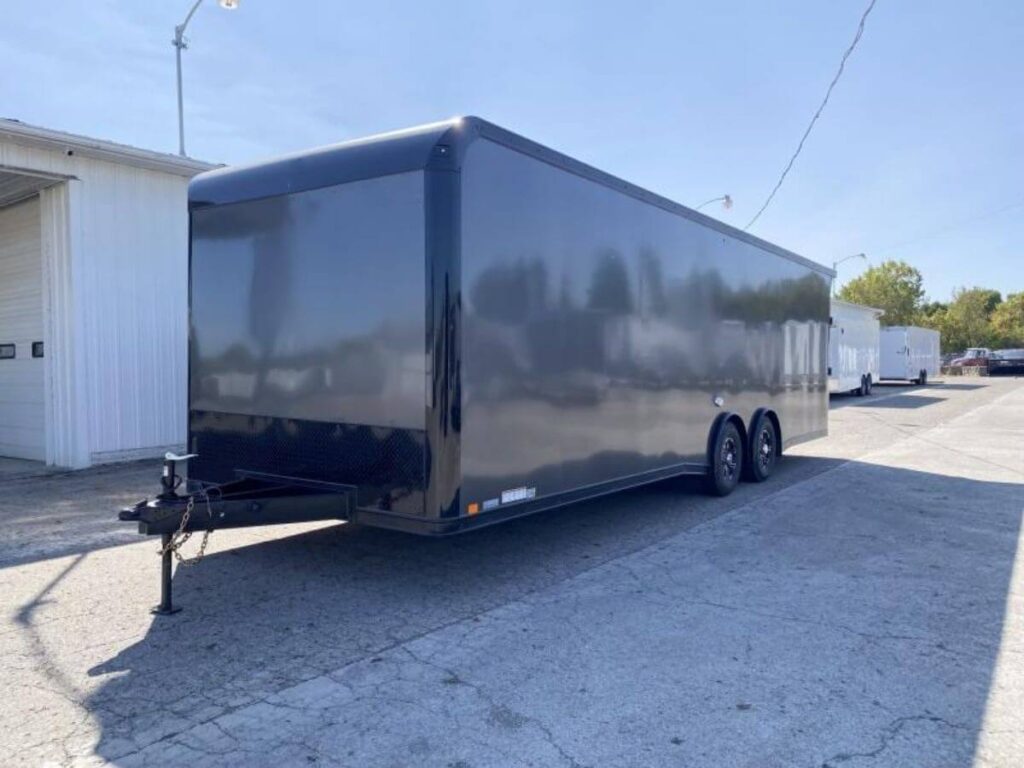
45-Foot Trailers
Though less common now, 45-foot trailers are still used in certain industries. They’re a practical choice for short-haul or city deliveries. I’ve worked with some older warehouses that can’t fit anything larger. In these cases, a 45-foot trailer is the best option for quick turnarounds.
You’ll still see these in use where roads are narrow, turning space is tight, or regulations cap trailer size.
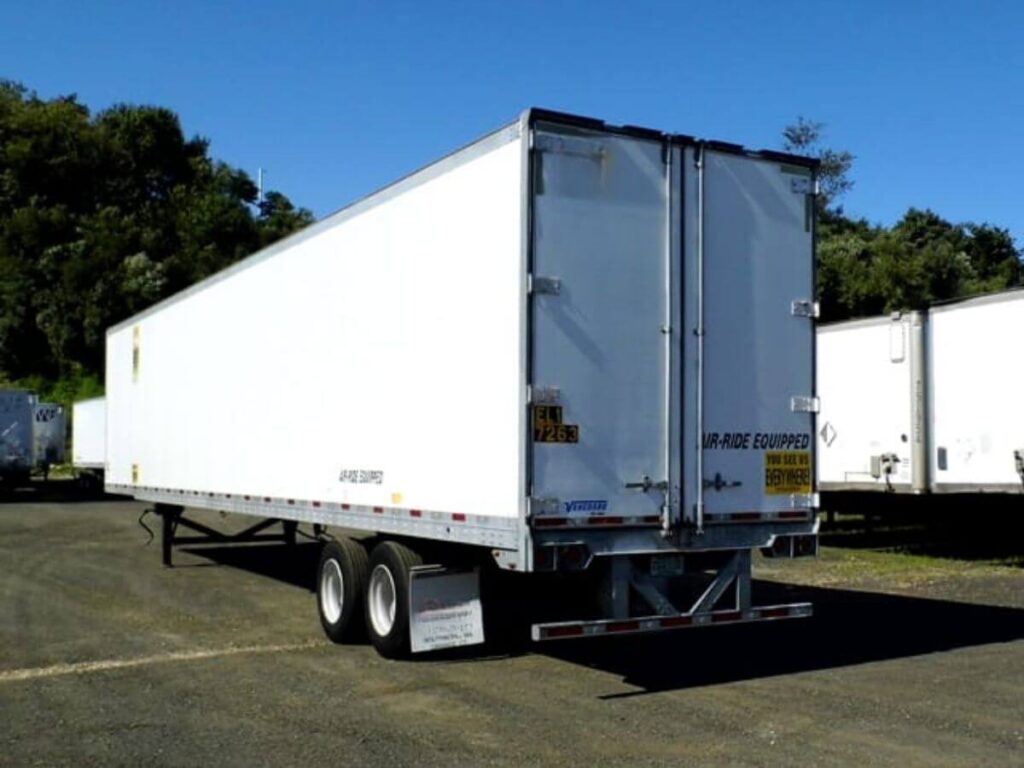
48-Foot Trailers
The 48-foot trailer is still widely used today, especially for flatbeds and some refrigerated units. These trailers carry heavy or oversized loads like steel beams, construction materials, and building supplies.
Because they’re a bit shorter than the standard 53-footers, they’re more manageable in certain job sites and rural roads. I’ve personally used 48s when I needed just enough deck space without dealing with extra swing room on turns.
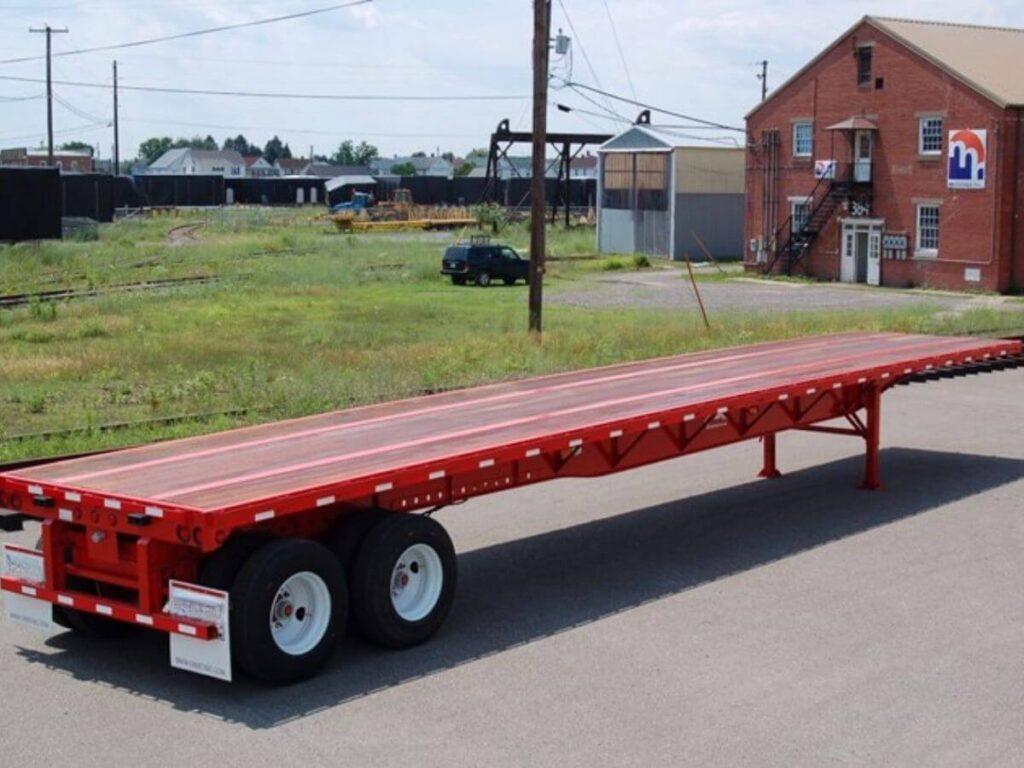
53-Foot Trailers
The 53-foot trailer is the most common trailer size in the U.S. It’s the go-to for most over-the-road (OTR) freight. Carriers like it for the extra space. Shippers like it because it maximizes how much product can go out in one trip.
These trailers are used across many industries—from, from retail and manufacturing to food distribution. They’re long, efficient, and accepted by most highways under standard trailer regulations.
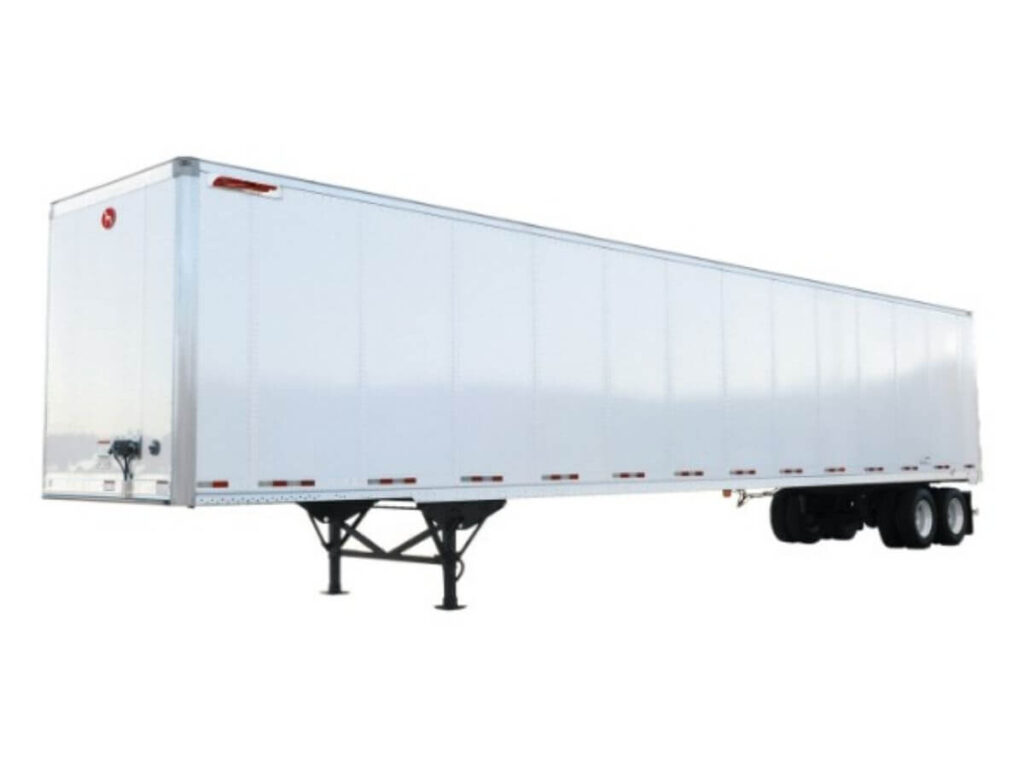
2. Trailer Length by Type
Trailers aren’t one-size-fits-all. I’ve matched trailers to loads in every kind of setting—from busy distribution centers to rural construction sites. If you don’t know the trailer type or its length, things can fall apart fast. Cargo might not fit. Permits might not line up. Or worse, you lose time and money.
Here are the main types of trailers you’ll come across—and how their lengths make a difference.
Dry Van Trailers
Dry vans are the most widely used trailers for general freight. Fully enclosed, they protect cargo from weather, theft, and road debris.
Standard lengths:
- 48 feet
- 53 feet
Commonly used in:
- Retail and packaged goods
- E-commerce deliveries
- Dry food and non-perishables
53-foot vans are standard for large shipments, while 48-foot versions may still be used in smaller operations.
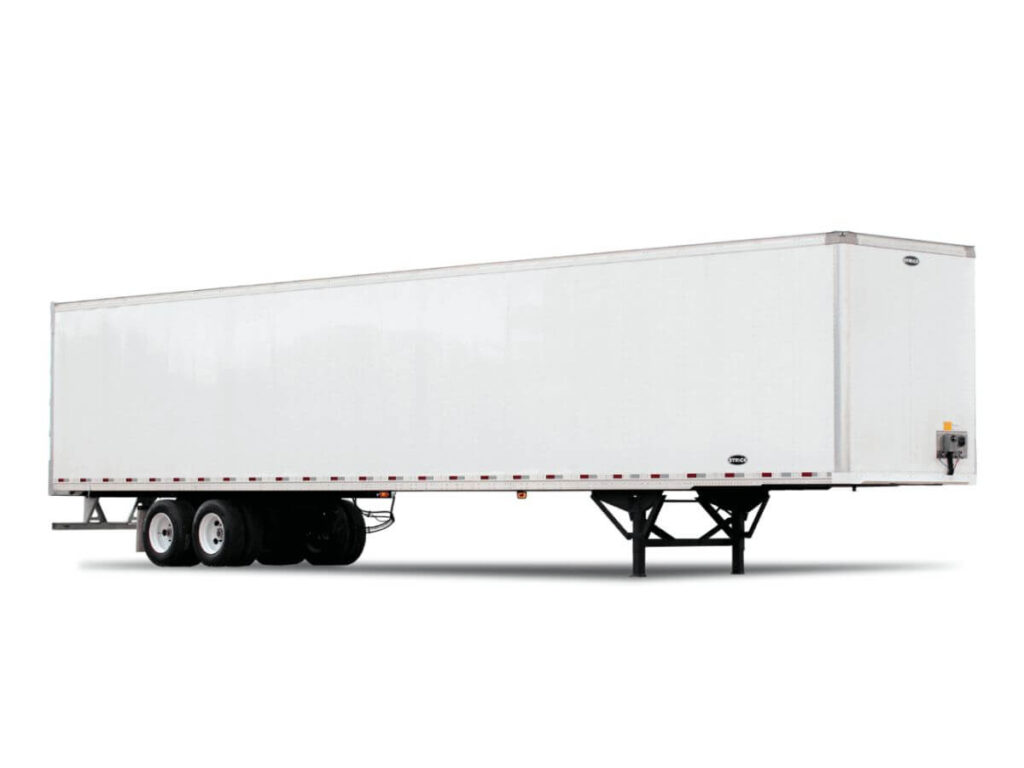
Flatbed Trailers
Flatbeds have no roof or sides, offering an open platform for oversized or oddly shaped freight.
Standard length:
- 48 feet, with extendable models up to 80 feet
Ideal for:
- Steel beams
- Construction materials
- Machinery and equipment
Loading can be done from the top or sides using forklifts or cranes.
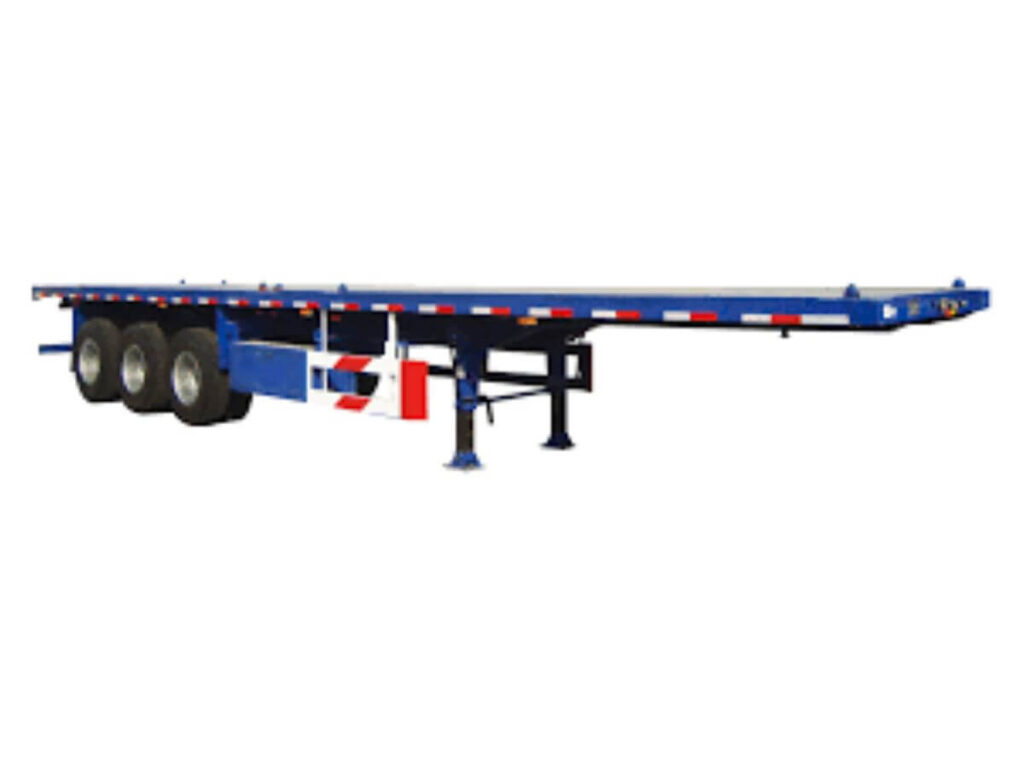
Refrigerated Trailers (Reefers)
Reefers are temperature-controlled trailers that help preserve sensitive goods during transport.
Typical lengths:
- 48 feet
- 53 feet
Used across:
- Food and beverage
- Medical supplies
- Floral products
In hot summers, I’ve watched food suppliers reject loads if they weren’t kept at the right temperature. If you’re hauling perishables, a reefer is non-negotiable.
So, can’t find the right supplier of refrigerated trailers for your needs? Try Rhinotrail. We use premium insulation materials to maintain stable internal temperatures even in extreme outdoor heat.
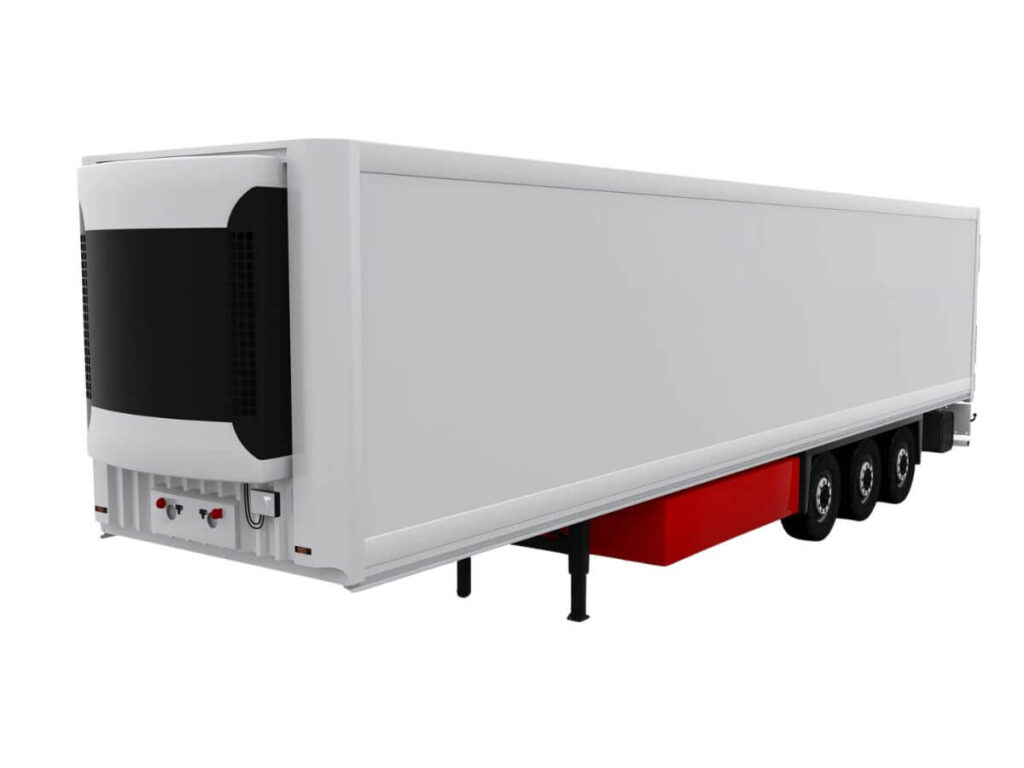
Lowboy Trailers
Lowboys feature a lower deck height for hauling tall or heavy equipment without exceeding legal height limits.
Deck lengths:
- 24 to 29 feet, with extendable versions available
Designed for:
- Bulldozers
- Excavators
- Industrial machinery
Includes upper and lower deck sections for better load control.
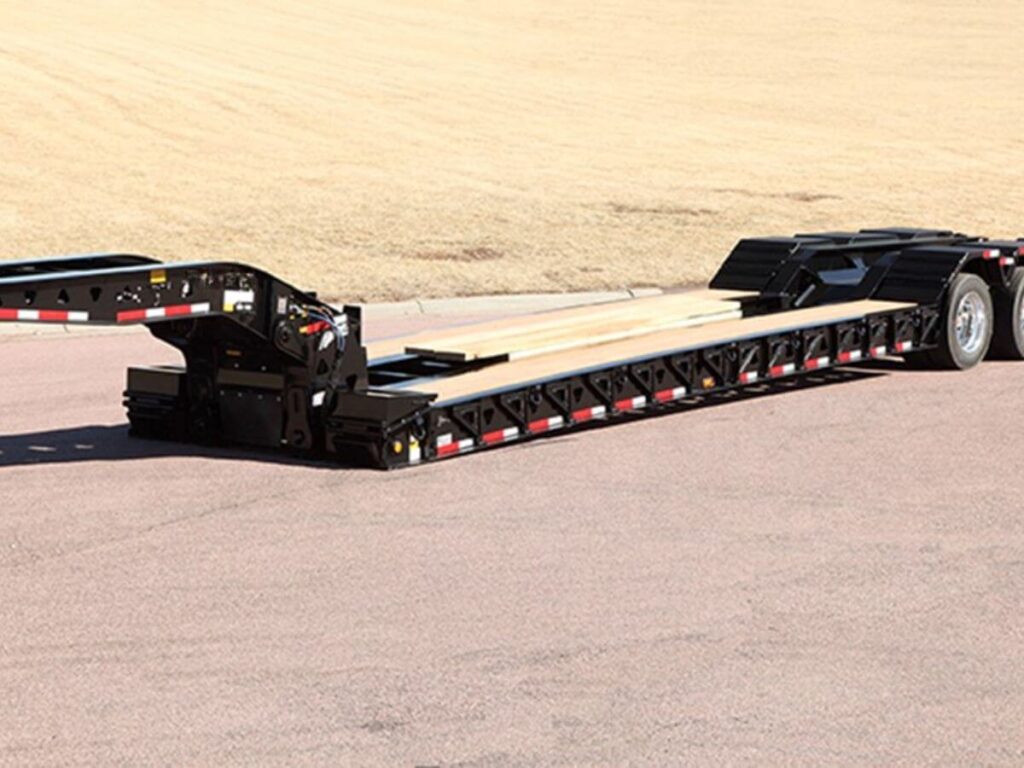
Tanker Trailers
Tankers move liquids, chemicals, and fuels. Length is based on what’s being transported and how much volume is needed.
Length range:
- 40 to 53 feet
Common applications:
- Fuel delivery
- Dairy transport
- Industrial liquid handling
Weight regulations and safety requirements also influence tanker length.
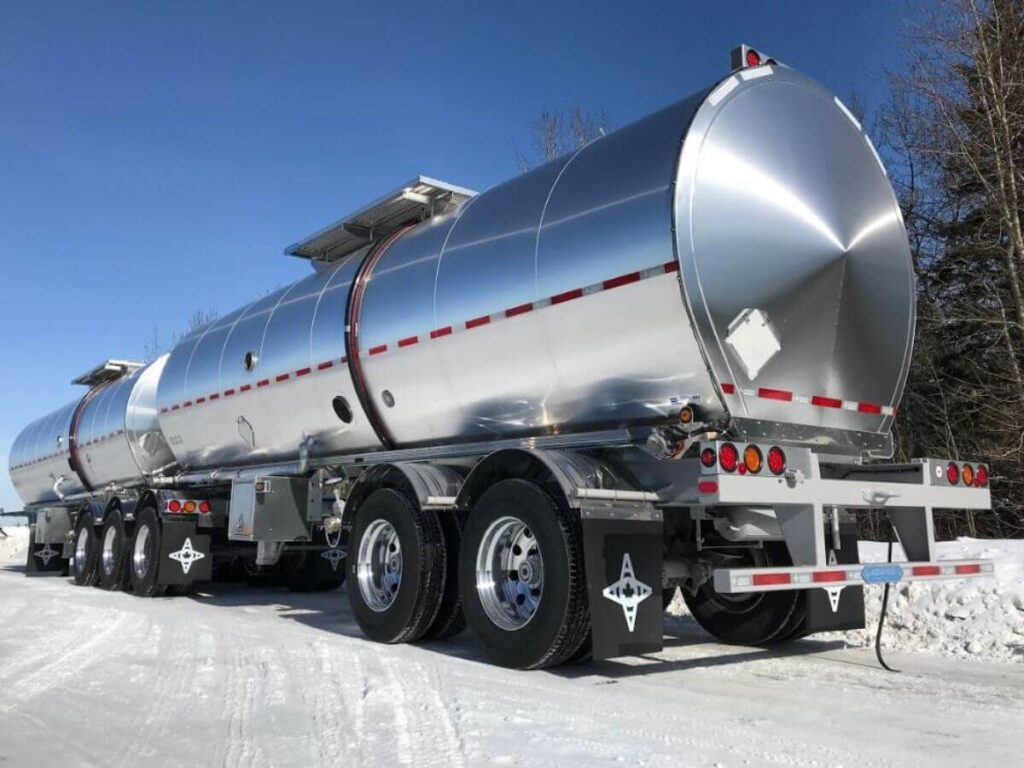
Double/Triple Pup Trailers
These short trailers—known as pups—are used in sets for long-distance or terminal-to-terminal runs.
Each trailer:
- 28 feet
Often used by:
- Parcel carriers
- LTL shipping fleets
- Postal services
They’re perfect for hub-to-hub transport. I’ve seen them used heavily in the Midwest where distribution centers are spaced just right for pup runs.
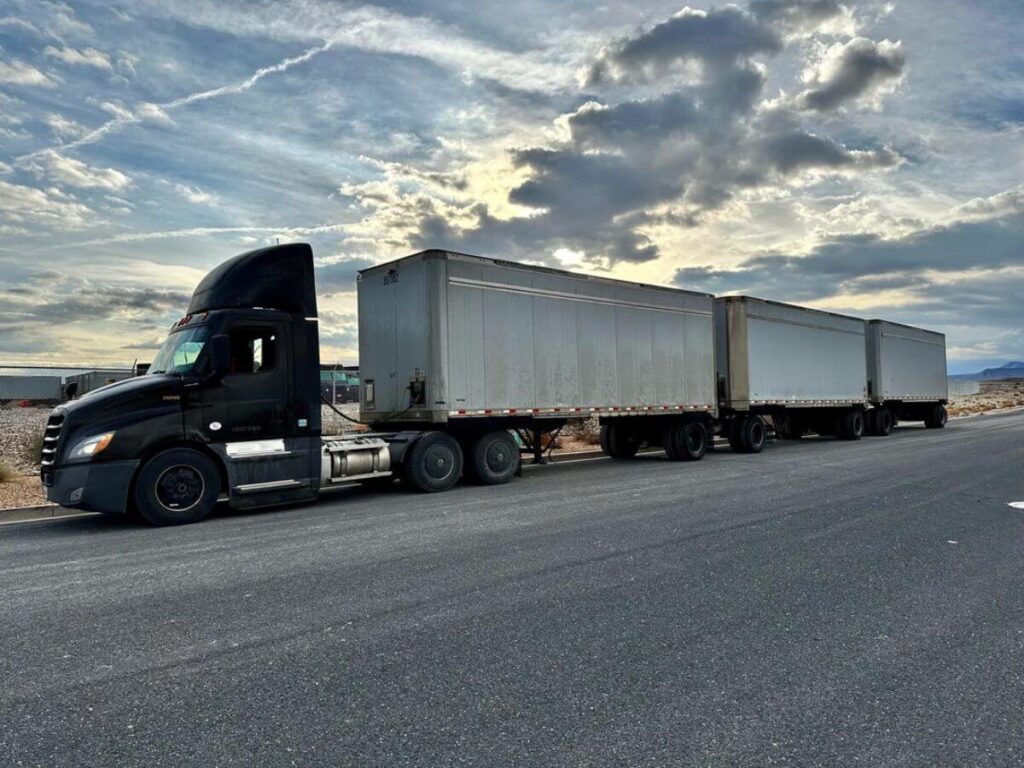
3. Specialized Semi Trailer Lengths
Some jobs call for trailers that go beyond standard lengths. These specialized trailers handle freight that’s extra long, oversized, or shaped in a way that typical trailers can’t support. In projects like infrastructure, wind energy, or equipment delivery, the right trailer makes all the difference.
Here are a few specialized trailer types you might come across on big jobs.
Extendable Flatbeds
These trailers start at a standard length but can stretch to 80 feet or more. The deck slides open to fit extra-long cargo.
Common loads include:
- Structural steel beams
- Wind turbine blades
- Large piping sections
They’re often used in heavy construction or renewable energy projects. A job once called for moving wind blades across state lines—and only an extendable flatbed made it possible.
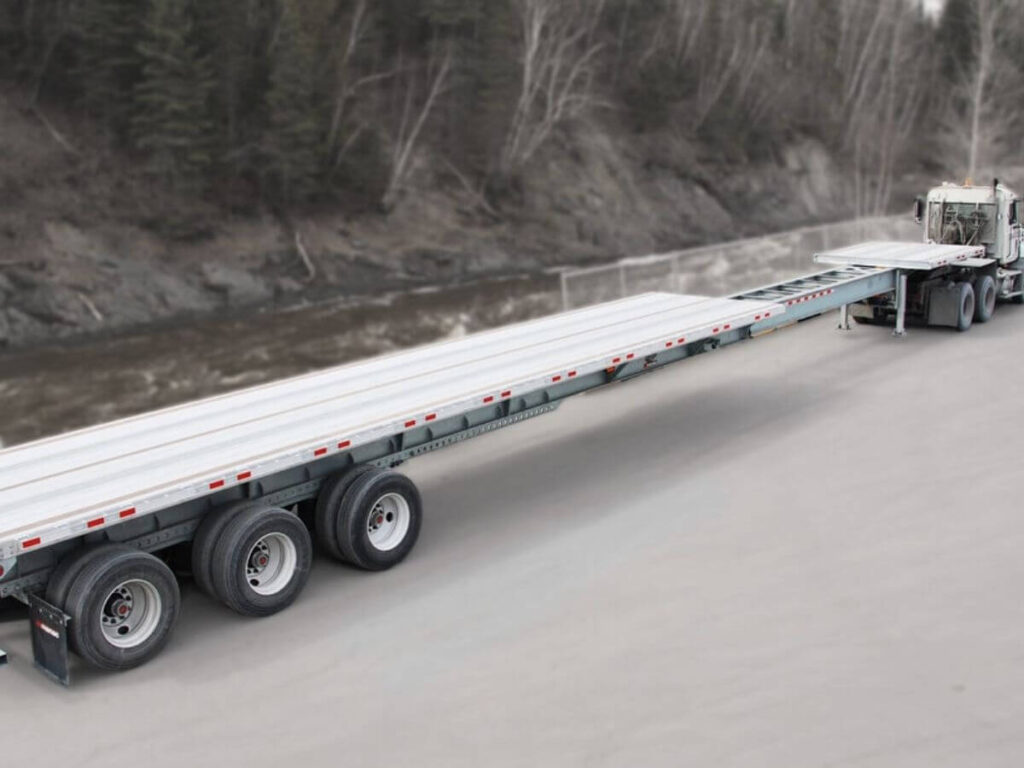
Stretch RGN (Removable Gooseneck) Trailers
RGNs are low trailers that let cargo be loaded from the front. The stretch version can go from 29 feet up to 65+ feet when extended.
Used for:
- Excavators
- Generators
- Tall or oddly shaped equipment
These are helpful when cargo can’t be lifted high but needs extra length and height clearance.
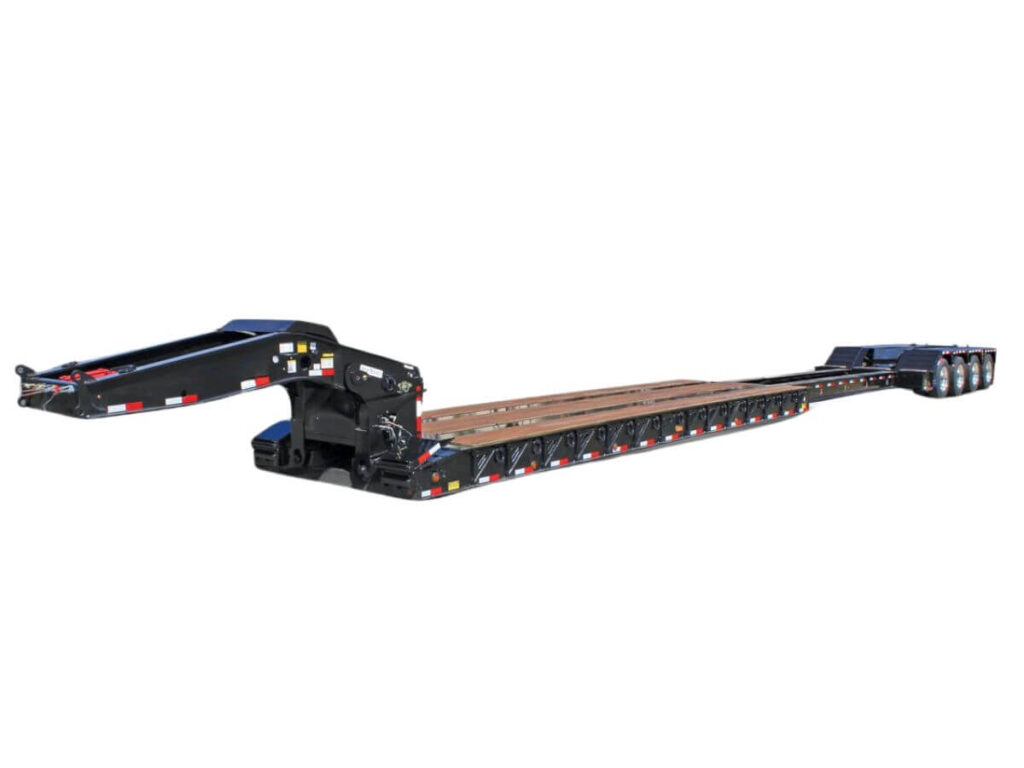
Auto Haulers
Auto haulers are made to move cars and trucks. Depending on the setup, they range from 50 to 80 feet long.
They can carry:
- Up to 9 passenger cars
- Commercial vehicle fleets
If you’ve seen a two-level trailer full of new cars on the highway—that’s an auto hauler in action.
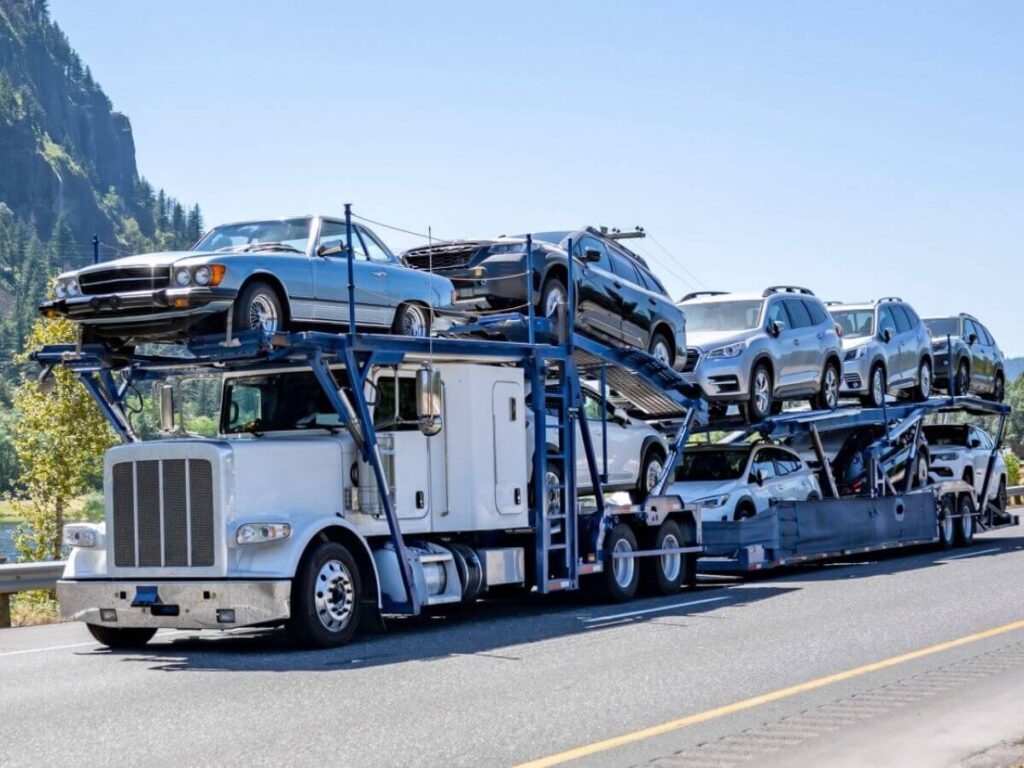
4. Trailer Lengths in Other Countries
The first time I worked with an overseas shipment, I thought the trailer size would be just like what we use here. Turns out, it wasn’t even close. The load plan didn’t match the equipment. We had to start from scratch—and and that taught me a lesson I never forgot.
Trailer lengths vary a lot depending on where you are. Each country has its own rules, road sizes, and freight systems. What fits in Texas might not even make it down a narrow street in India or a tight corner in Germany.
If your work involves international shipping, it helps to know what’s standard in other places. It can save time, reduce mistakes, and help you choose the right partner abroad.
Here’s a quick look at common trailer lengths across different regions—and what influences them.
European Union
In most of the EU, the standard trailer length is 13.6 meters, which is about 44.6 feet. These trailers are often used for boxed goods and palletized freight.
Some countries in Europe allow Longer Combination Vehicles (LCVs). These setups can reach up to 25.25 meters or 82.8 feet. They help reduce trips by hauling more cargo at once.
All these limits fall under EU Directive 96/53/EC, which sets maximum sizes for trucks and trailers across member states.
Australia
Australia moves a lot of freight across long, open roads. Standard semi-trailers are around 13.7 meters (45 feet). But they also use B-doubles—two trailers linked together—measuring up to 26 meters (85 feet).
In remote areas, road trains can stretch to 53.5 meters (175.5 feet). Watching one pass by is something you don’t forget.
Asia (China, India)
In parts of Asia, trailer sizes tend to stay between 30 and 40 feet. Urban congestion, narrow roads, and strict weight rules all play a part.
In cities like Mumbai or Beijing, longer trailers struggle with turning space and clearance. Planning routes around these issues is part of daily operations.

5. Factors That Influence Trailer Length Selection
Trailer length isn’t just a number—it affects how smooth the job goes. When I’ve picked the wrong length in the past, it led to delays, wrong turns, or wasted trips. You don’t forget those days. It taught me that even small choices—like trailer length—can impact everything from loading to delivery.
Here are the main factors I now check before every haul.
Type of Freight
What you’re hauling makes a big difference.
- Bulky freight like pipes or heavy machinery often needs flatbeds or extendable trailers.
- Perishable items such as meat or medicine require reefers, which keep cargo cold.
The type of freight should be the first thing you check before assigning a trailer.
Route and Road Access
Some trailers work great on highways but struggle in the city.
- Shorter trailers are better for tight turns, small streets, and busy loading zones.
- For long-distance jobs, 53-foot trailers are more efficient and carry more in one trip.
Legal Regulations
Each region has its own rules.
- Federal and state laws limit trailer length on public roads.
- Oversize loads may need permits and escort vehicles, which add time and cost.
Loading and Dock Compatibility
Not all warehouses are built for long trailers.
- Tight docks, narrow yards, or older buildings may need shorter trailers for proper alignment and access.
Always double-check the delivery site. It can save you hours of headache.
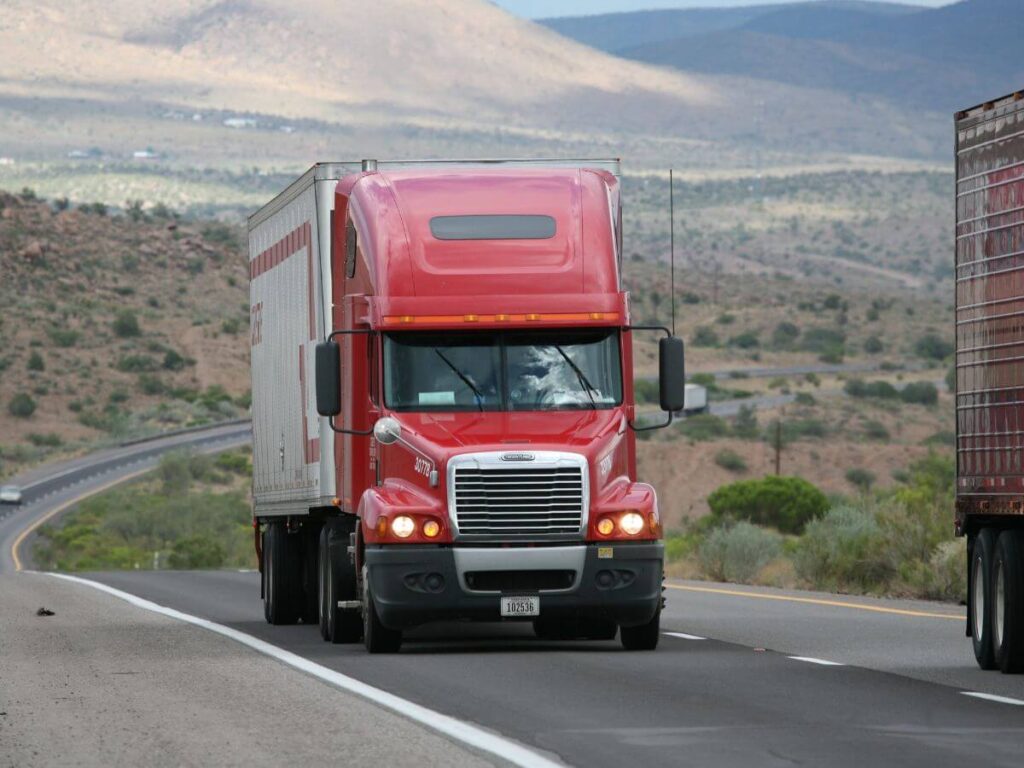
6. Tips for Choosing the Right Length for Your Operations
Picking the right trailer length has saved me from more than a few disasters. And yes, I’ve had jobs go sideways just because the trailer didn’t match the plan. These tips are based on what’s worked for me—and what I’ve learned the hard way.
Tip #1 Start With the Load
Always match the trailer to the cargo first. If you’re hauling long steel or oversized materials, you’ll need a flatbed or extendable option. Perishable freight like meat or dairy calls for a reefer that can hold temperature the entire trip. The load should always lead to the decision.
Tip #2 Know Your Route
Trailer length must match the route just as much as the load. Shorter trailers work better in tight city streets or older job sites. On long interstate hauls, longer trailers are more efficient and save fuel across the miles. Knowing the delivery area ahead of time helps avoid tight corners and last-minute reroutes.
Tip #3 Check Local Laws
Legal limits can change from one state or region to the next. I once ran into a problem at a weigh station because the trailer was just over what was allowed without a permit. Checking state guidelines and trailer length rules in advance can save you a lot of time and money.
Tip #4 Visit the Dock or Site First
Not all docks are designed for longer trailers. Older facilities or smaller lots may only support trailers up to 45 feet. Visiting the site or reviewing layout plans helps avoid wasted trips and tight backing situations. A little research upfront can prevent a major headache later.
Conclusion
That trailer I mentioned in the beginning? The one that was too long for the lot? I’ve never let that happen again.
Now you’ve got what I didn’t that day—clear info on trailer lengths, types, and how to choose the right one for your job.
You know what fits where. You know why it matters
Every haul starts with a good choice. You’ve got the knowledge. Now it’s time to act.
Rhinotrail can help you match your load with the right trailer—faster and easier.
Contact us today to get started.


